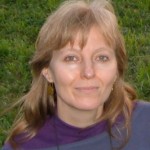
Maristela Salvatori
Instituto de Artes – Universidade Federal do Rio Grande do Sul
maristela.salvatori@ufrgs.br
chasqueweb.ufrgs.br/~maristelasalvatori
Biography
Teacher on the undergraduate and Postgraduate Visual Arts Programme at the Universidade Federal do Rio Grande do Sul. She lived a year in Québec as Invited Researcher of the Laval University and four years in Paris, taking a doctorate in Fine Art, at Universite de Paris I, and living for two years in studio-accommodation at the Cite Internationale des Arts. She has participated in Artist’s Residencies at Frans Masereel Centrum, Belgium (between 1998 and 2005). She has won awards in France and Brazil, including GRAV’X 1999 in Paris. Her solo shows at galleries and museums in France, Mexico and Brazil, include Galerie Michele Broutta, Paris, 2000.
Academic Paper
Expressions of the multiple – the attraction of the mark
The graphic arts have a relatively recent history in Brazil and yet they have formed an important area of practice in Brazilian art and are closely connected to contemporary art production. I shall be focusing on some key artists from the extensive production in the south of the country, whose stimulating works touch on the extensive boundaries of print processes. Regina Silveira has long been concerned with the play of projection and distortion, using numerous print possibilities, particularly offset-lithography to explore unusual possibilities with everyday objects, reworking key images from art history and creating ghostly shadows. Her interest in new processes and architectural scale have led to the creation of many installations. Vera Chaves Barcellos first achieved recognition as a visual artist through printmaking, which she uses together with drawing, photography and video in persistent investigations of successive reformulations of the image. Epidermic Scapes began with inking small areas of the human body to print onto tracing paper as monotypes which were later used as photographic negatives. The tiny details were enlarged and printed as screen prints, has been reassembled in a variety of dimensions and groupings to form different works. In a kind of inverted tautology, Maria Lucia Cattani starts from the same forms to achieve different results. On the one hand she often uses the potential of multiplication inherent to print plates and blocks to produce unique objects/images, and on the other hand she uses the works themselves as starting points for the development of new pieces. The work of these artists has been strongly based on and developed through the use of graphic languages, and their creative practice has involved access to digital technology interwoven with manipulation of material.
